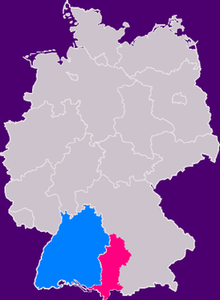Then to Now
The Maultauschen was once considered a poor-people food because it was a cheap and creative way to use up leftovers, stale bread and old vegetables. It wasn’t until the 19th century when aristocrats finally accepted and started enjoying the Maultauschen and other German dumplings. The dumplings are famously known as the Swabian Maultaschen, but are also commonly known as Grune Krapfen, translating to "green dough," or HerrgottsbscheiBerle, translating to “God cheaters” (Sheraton, 1965), (McMeel, 2007).
According to a 2009 article in The Local, a German newspaper in English, the Swabian Maultaschen is now considered a delicacy in Germany. The European Union protected it as a regional specialty in 2009 and legally outlaws any imitation of it. The Maultaschen gained Protected Geographical Indication (PGI) statues ensuring that at least one stage of production, processing or preparation, takes place in the region of Swabia. The application submitted by the state in January 2006 said “no other Swabian dish is as popular and as well-known as a specialty way beyond the borders of Swabia…Maultaschen are mentioned in Swabian literature and associated with a large number of festivals and customs in Swabia” (“EU designates Maultaschen a protected regional food,” 2009). It is commonly served in German restaurants and enjoyed by locals and foreigners alike.

